
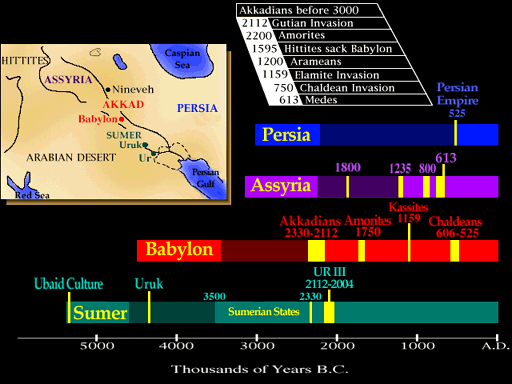



The word 'Mesopotamia' is in origin a Greek name (mesos `middle' and 'potamos' - 'river' so `land between the rivers'). 'Mesopotamia' translated from Old Persian Miyanrudan means "the fertile cresent". The Aramaic name is Beth-Nahrain meaning "House of Two Rivers" and is a region of Southwest Asia.
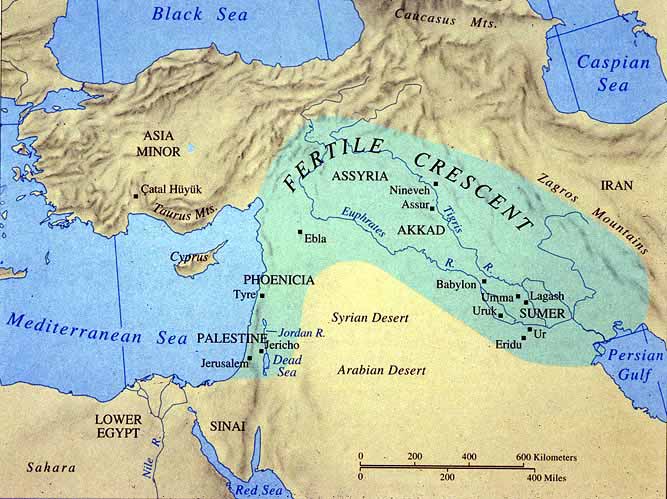
Civilization developed in Mesopotamia simultaneously with Egypt and the two are often called the 'Fertile Crescent'. The Fertile Crescent is a rich food-growing area in a part of the world where most of the land is too dry for farming. The Fertile Crescent begins on the eastern shore of the Mediterranean Sea, and curves around like a quarter moon to the Persian Gulf.
Some of the best farmland of the Fertile Crescent is in a narrow strip of land between the Tigris and Euphrates Rivers. The Greeks later called this region Mesopotamia, which means "between the rivers." Many different civilizations developed in this small region. First came the Sumerians, who were replaced in turn by the Assyrians and the Babylonians.
Mesopotamia was the alluvial plain lying between the Tigris and Euphrates rivers, composing parts of Iraq and Syria. More commonly, the term includes these river plains in totality as well as the surrounding lowland territories bounded by the Arabian Desert to the west and south, the Persian Gulf to the southeast, the Zagros Mountains to the east and the Caucasus mountains to the north. Mesopotamia is famous for the site of some of the oldest civilizations in the world.
Writings from Mesopotamia (Uruk, modern Warka) are among the earliest known in the world, giving Mesopotamia a reputation of being the Cradle of Civilization, therefore it is regarded by some as the oldest known civilization. It is said that Mesopotamia was the place of the legendary Garden of Eden. On this spot where the Tigris meets the Euphrates Rivers. the holy tree of Adam emerged symbolizing the Tree of Life in the Garden of Eden.
Mesopotamia does not refer to any particular civilization. Over the course of several millennia, many civilizations developed, collapsed, and were replaced in this region including the Sumerians -- Akkadians -- Babylonians and Assyrians.
Mesopotamia had no natural boundaries and is difficult to defend. The influence of neighboring countries is large. Throughout the history of Mesopotamia trade contacts, slow diffusion of foreign tribes and military confrontations had been of great influence.
Mesopotamia was settled, and conquered, by numerous ancient civilizations. It was home to some of the oldest major ancient civilizations, including the Sumerians, Akkadians, Babylonians and Assyrians. In 5000 BC, the Sumerians arrived in Mesopotamia. The Semites arrived in 2900 BC and by 2000 BC they had mixed peacefully with the Sumerians and had assumed political dominance.
The Mitanni were an eastern Indo-European people (belonging to the linguistic "satem" group) who settled in northern Mesopotamia circa 1600 BC South-East of Turkey and by circa 1450 BC established a medium-size empire east, north and west, and temporarily made tributary vassals out of kings in the west, even as far as Kafti (minoic Crete) and making them a major threat for the Pharaoh.
By 1300 BC they had been reduced to their homeland and the status of vassal of the Hatti (the Hittites), a western Indo-European people (belonging to the linguistic "kentum" group) who dominated most of Asia Minor from their capital of Hattutshash (modern Turkey) and threatened Egypt even more.
Meanwhile the Kassites established a strong realm, Sangar, in southern Mesopotamia, with Babel as its capital, not touched by Mitanni or Hittites. But the Elamites threatened or invaded them.
Chaldaean New Babylonia circa 600 BC.
In the Iron Age, Mesopotamia was controlled by the Neo-Assyrian and Neo-Babylonian empires. The indigenous Sumerians and Akkadians (including Assyrians and Babylonians) dominated Mesopotamia from the beginning of written history (c. 3100 BC) to the fall of Babylon in 539 BC, when it was conquered by the Achaemenid Empire. It fell to Alexander the Great in 332 BC and, after his death, it became part of the Greek Seleucid Empire.
Around 150 BC, Mesopotamia was under the control of the Parthians. Mesopotamia became a battleground between the Romans and Parthians, with parts of Mesopotamia coming under ephemeral Roman control. In AD 226, it fell to the Sassanid Persians, and remained under Persian rule until the 7th century Arab Islamic conquest of the Sassanid Empire. A number of primarily neo Assyrian and Christian native Mesopotamian states existed between the 1st century BC and 3rd century AD, including Adiabene, Osroene and Hatra.
In modern political terms this covers the country of Iraq and parts of Syria and Turkey. Mesopotamian region was (and still today is) very diverse: undulating plains in the North, where wheat growing and cattle rearing could be practiced; further South, the rivers were rich in marine life and the river banks jungles of vegetation where lions prowled and wild boar could be hunted. The rich wildlife was probably what first attracted humans to the Mesopotamian plain.
The Southern plain, outside the area of rain, fed agriculture, but, over the millennia, the rivers have laid down thick deposits of very fertile silt and, once water is brought to this soil in ditches and canals, it proves a very attractive area to farmers. For materials such as wood, stone and metals, however, people have to look North and East, to the mountains where the first settlers had originated.
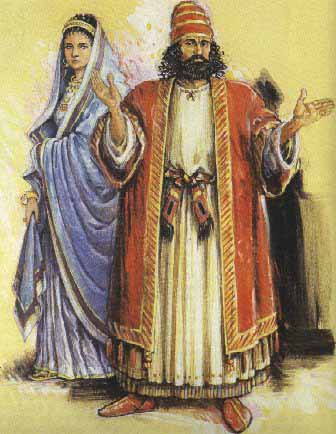
As far as we can tell, farmers and fishermen started to settle the Mesopotamian plain around 5,500 Before Common Era. Over time, their small villages grew into large settlements. The focus of these communities appears to have been the temple of the town's patron god or goddess.
The rich farmland provided a surplus of agricultural goods and any wealth generated was invested in monumental temple buildings, such as those found at Eridu, Uruk and Ur. Temples and ordinary houses were built using the reeds and mud that line the river banks. Centuries of rebuilding using sun-dried mud-bricks resulted in high mounds, or Tells, rising above the fields and canals. These now dominate the flat Mesopotamian plain and, when abandoned by people, are the sites chosen by archaeologists for their excavations.
At the end of the fourth millennium, Uruk was probably the largest city in the world (estimated by some scholars at 400 hectares - the size of Rome in the first century of our Common Era). Centered on the important temple of Inanna (the Great Goddess of Love and War), the city has produced beautiful stone sculptures depicting the temple flocks of sheep and goats.
Of more significance, however, is the discovery at Uruk of the world's earliest recorded writing. Using a reed stylus to draw on tablets of clay, the temple administrators recorded the movement of agricultural produce and out of the temple storerooms including beer, bread and sheep. Initially the records took the form of pictures of the objects being counted together with signs representing numerals. Gradually, these pictographs became more stylized and wedge-like or cuneiform (Latin for wedge = cuneus) and adapted to write the local language, or Sumerian. The ability to write allowed the Sumerians to record not only lists of goods but also events around them. This development therefore takes us from pre-history to history.
Uruk was not the only large settlement in Southern Mesopotamia. The wealth of one of these city-states is demonstrated by the Royal Graves of Ur, which date to around 2600 BCE. Of the thousands of graves excavated by Sir Leonard Woolley at Ur in the 1920s, sixteen were particularly rich. Woolley called them 'Royal' because he believed they were the graves of Ur's queens and kings. The most remarkable aspect of these burials is the large number of human bodies found in the pits. These are interpreted as sacrificial victims, accompanying their leader in death, and it would appear that they died relatively peacefully. The excavations found cups close to some of the bodies: where these perhaps poison chalices? The victims are identified as soldiers, harpists and serving ladies on their rich clothes and ornaments - made from gold, lapis lazuli, carnelian and shell.
Around 2350 BCE the southern city states were united into one empire by Sargon, king of the city of Akkad (also read as Agade). The administration was centralised and the Semitic language Akkadian (named after Sargon's capital) was introduced as the official language in preference to Sumerian. Akkad has not been located but the period produced some astonishing works of art, including fine cylinder seals.
Sargon and his sons ruled Mesopotamia for 150 years. The last of the great Akkadian emperors was Naram-Sin. Later stories present this man very unfavourably. He is said to have angered the Air God Enlil by taking his army into the god's temple. Enlil then sent against Naram-Sin a people from the mountains bordering Mesopotamia who, we are told, destroyed the capital Akkad. The location of the city remains unknown to this day.
The Akkadian Empire had collapsed and Mesopotamia was in turmoil. The southern cities began to reassert their independence. Chief among these was the city of Ur. Under king Ur-Nammu, the city established itself as the capital of an empire that rivalled that of the Akkadian rulers. Sumerian (although no longer a spoken language) was reintroduced as the official written language of the dynasty known to historians as the Third Dynasty of Ur.
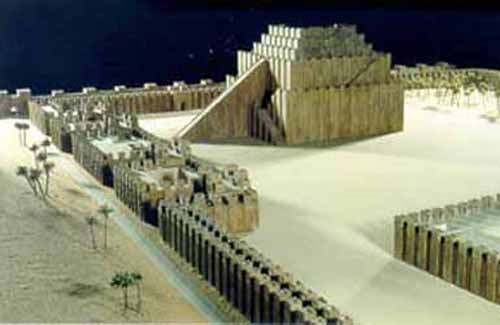
Ziggurats
Ur-Nammu was a prodigious builder. The most impressive monument of his reign was the ziggurat at Ur. Although similar in shape to the pyramids of Egypt, ziggurats were not tombs but made of solid brickwork. Often, as at Ur, three staircases led up one side of the tower to several stages. At the summit was a shrine to the god. One of the most famous ziggurats was built in the city of Babylon and gave rise to the story of the Tower of Babel.
Like the earlier kings of Akkad, the rulers of the Third Dynasty of Ur had to fight with groups of people moving into Mesopotamia from the surrounding mountains and deserts, attracted by the wealth of the country. Under Ur-Nammu's grandson, Ibbi-Su (around 2028-2004 BCE), the empire collapsed as Amorite and Hurrian tribes established themselves throughout Mesopotamia. At the same time, the Akkadian language replaced Sumerian, which continued to be used by scribes only for monumental inscriptions and religious literature. For the next three hundred years the cities of Lower Mesopotamia, chiefly Isin and Larsa, competed for control of the region.
Further North lay the city of Ashur on a rocky promontory overlooking an important crossing of the River Tigris. From here the city dominated the caravans of donkeys carrying metals and rare materials from the east and west, and the boats moving to and from the cities of Sumer to the South. As an important trading centre, Ashur had by 1900 BCE established commercial colonies in Anatolia (modern day Turkey). Cloth and Iranian tin were exchanged for Anatolian silver and records of these activities on clay tablets have been found at a number of sites in Turkey. The letters were often protected by an envelope of clay on which the recipient's name was written and sealed with a cylinder seal. In other examples, a copy of the letter was written on the envelope as a safeguard.
At the end of the nineteenth century BCE an ambitious solder called Shamshi-Adad brought Ashur under his control. He established an empire which stretched across the North of Mesopotamia. Around 1780 BCE, Shamshi-Ada died and his sons lacked their father's abilities. The empire collapsed and Ashur and the North were now open to attack. When attack came, it came from the South. As king of the small town of Babylon, Hammurapi united Southern Mesopotamia into a single empire.
In the second half of his reign, he marched North and received the submission of Northern kingdoms, including the rulers of the kingdom of Ashur. As with Shamshi-Adad, however, Hammurapi's death caused his empire to fall apart. Despite this, the city of Babylon was to remain the capital of a Southern kingdom. Hammurapi is best remembered for his code of laws (the famous stela of Hammurapi is now in the Louvre in Paris). In 1595 BCE the dynasty of Hammurapi was brought to an end. It is possible that the Hittites from Anatolia made a lightning raid down the Euphrates, sacked Babylon and captured the statue of Marduk, patron god of Babylon.
For the next 150 years or so, there is little information to reconstruct events. When evidence becomes available, it is clear that Mesopotamia is dominated by two major powers: the Kassites ruling Babylon and a Hurrian kingdom of Mitanni in the North. What little that is known of these two empires often comes from areas outside Mesopotamia, such as the New Kingdom Egypt and Hittite Anatolia.
Around 1350 BCE, however, it is clear that the kingdom of Mitanni collapsed under increasing pressure from the Hittites to the West. With the fall of Mitanni, Assyria reasserted her independence and began a process of consolidation which would lead the country to create a vast empire during the first millennium BCE.
Around 1250 BCE the Near East faced general conflict and devastation. The Hittite Empire collapsed as part of a general movement of people (the so-called Peoples of the Sea - a mixture of dispossessed people, brigands and mercenaries) moving around the Mediterranean coast looking for areas to settle. In the course of these disturbed times several unsuccessful raids were made by the Sea Peoples against Egypt under the Pharaohs Memeptah and Rameses III. Tribes of Arameans were, meanwhile, moving into Mesopotamia from the west, pushing the boundaries of Assyria back to the capital Ashur.
The first millennium revealed a Near East markedly changed politically. The Mediterranean coast, North of Egypt, was now settled by Philistines. Further inland, Hebrew tribes were settling in the hill country. In the North (modern Syria), traditions of the now vanished Hittite Empire were maintained, known today as Neo-Hittites. In Mesopotamia, various Aramean and Chaldean tribal groups competed for supremacy in Babylonia while the Assyrians maintained a firm hold on their homeland, slowly moving against the groups which had settled in the region.
At the beginning of the 9th century BCE, Assyrian kings started sending military expeditions west in an attempt to control important trade routes and receive tribute from less powerful states. Among the first important kings of this so-called Neo-Assyrian period was Ashurnasirpal II. He moved away from Ashur and built himself a new capital city at Kalhu (Biblical Calah, modern Nimrud).
To commemorate their achievements and glorify their names, the kings of Assyria built huge palaces and temples in their capital cities, which they decorated with stone reliefs. Some of the most spectacular examples of this type of decoration are displayed on the ground floor of the British Museum, in London, England. They also used brightly colored glazed tiles showing the king participating in state ceremonies. Ivory, often carved with scenes similar to those on the bricks, was also used to decorate furniture and small exotic objects.
The movement of the Assyrian armies towards the Mediterranean continued under Ahurmasirpal's successors but there was no real attempt to incorporate conquered territories into an empire.
In 745 BCE, however, Tiglath-pileser III came to the throne after a rebellion at court. The new king initiated changes in the administration of Assyria, including the annexation of countries into an empire. Over the following one hundred years, kings such as Sargon, Sennacherib and Esarhaddon not only built new capitals (Khorsabad and Nineveh), but also expanded the empire until Assyrian control stretched from Iran to Egypt.
On his death in 668 BCE, Esarhaddon was succeeded by his son Ashurbanipal, who, though faced with trouble in Babylonia and Egypt, boasts of a peaceful and prosperous reign, allowing the king time to learn to read and write as well as engage in the royal sport of lion hunting.
However, within 20 years of Ashurbanipal's death around 627 BCE, Assyria was faced with internal strife and destruction. To the East, (in modern day Iran) lay the empire of the Medes.
In 614 BCE a Median army under Cyaxares invaded the Assyrian homeland, attacked Nineveh and destroyed the ancient city of Ashur. Tow years later the combined forces of Cyaxares and the king of Babylon, Nabopolassar, captured Nineveh. The Assyrian court fled west to the town of Harran where they were finally defeated in 609 BCE by Nabopolassar's son, Nebuchadnezzar. While the Medes withdrew to consolidade their conquests in the east, the Assyrian empire passed into the hands of the kings of Babylon.
Sixty years of Babylonian supremacy was threatened during the reign of king Nabonidus, when Mesopotamia was faced with the expansion of yet another eastern power, the Persians.
In 539 BCE, the armies of the Persian king Cyrus (a member of the Achaemenid family) marched upon Babylon and captured the city and with it all the Neo-Babylonian Empire. This, in effect, brought to an end three thousand years of self-rule in Mesopotamia. While many of the traditions and way of life in the region continued under the new rulers, Mesopotamia was now part of the much greater empire of the Persians which stretched from Egypt to India. Over the next 200 years the region would see the advance of Greek civilization and the eventual destruction of the Persian Empire at the hand of the Macedonian king Alexander the Great.
The region ceased to be a major power house since its inclusion in the Persian Empire of the Achaemenids, apparently as two satrapies, Babylonia in the south and Athura (from Assyria) in the north.
After the conquest of all Persia by the Hellenizing Macedonian king Alexander the Great, the satrapies were part of the major diadochy, the Seleucid Empire, almost until its elimination by Greater Armenia in 42 BC.
Most of Mesopotamia then became part of the Parthian Empire of the Arsakides.
However part, in the northwest, became Roman. Under the Tetrarchy, this was divided into two provinces, called Osrhoene (around Edessa; roughly the modern-day border between Turkey and Syria) and Mesopotamia (a bit more northeast).
During the time of the Persian Empire of Sassanids, their much larger share of Mesopotamia was called Dil-i Iranshahr meaning "Iran's Heart" and the metropol Ctesiphon (facing ancient Seleukia across the Tigris), the capital of Persia, was situated in Mesopotamia.
Since the early caliphs annexed all Persia and advanced even further, Mesopotamia was reunited, but governed as two provinces: northern Mesopotamia (with Mosul) and southern Iraq (with Baghdad, the later caliphal capital).
The climate is exceedingly hot, but also very humid - the floods often unpredictable. Mesopotamians were at the mercy of their hostile environment, and believed themselves to be at the mercy of angry and irrational gods. The civilization which produced one of the seven wonders of the ancient world, the hanging gardens of Babylon, also compiled the Epic of Gilgamesh, a pessimistic portrayal of the futile search for immortality and human meaning. City states rose and fell, empires rose and fell, yet the human spirit of the Mesopotamians endured.
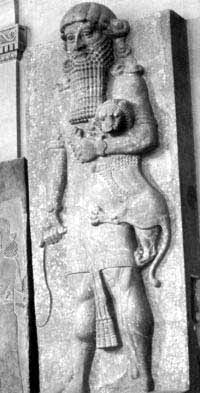
Mesopotamia did not have protection from natural boundaries.This led to constant migrations of Indo-European people from the area between the Black and Caspian seas. This lead to a constant migration and 'Cultural Diffusion', or the process where an existing culture adopts the traits of another and the two eventually merge into a new culture. As a result, a strong central government failed to develop in Mesopotamia. The dominant political unit was the 'City-State', a small area surrounding a large, complex city.
Ancient Mesopotamian riddles hit on sex, beer and politics NBC - January 27, 2012
Millennia before modern-day Americans made fun of their politicians or cracked crude jokes over a cold one, people in ancient Mesopotamia were doing much the same thing. The evidence of sex, politics and beer-drinking comes from a newly translated tablet, dating back more than 3,500 years, which reveals a series of riddles. The text is fragmentary in parts and appears to have been written by an inexperienced hand, possibly a student. The researchers aren't sure where the tablet originates, though they suspect its scribe lived in the southern part of Mesopotamia, near the Persian Gulf.
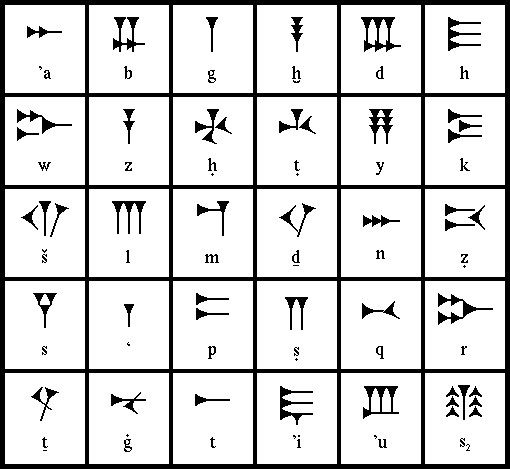
Mesopotamians had one of the first recorded languages. It was invented to keep track of farming and trade. The form of writing, called Pictograms that was used by the Mesopotamians was very simple. One mark indicated a number, the other indicated what was being counted. The writing was done by marking wet clay with a reed. Efficient and easy as this was it became much more difficult with higher numbers.
Gradually this system became out-dated and indograms came into use. Indograms solved the problem but were very difficult and hard to learn because a different symbol was used for each word. The next step became phonetic writing. Phonetic writing is the type of writing that we, and most other countries use. With all three forms of writing one problem remained; it took many years of study to learn how to read and write. Those who did earned the title of "scribe".
The Mesopotamian economy was based on farming. Irrigated fields provided the Mesopotamians with everything they needed to live. In Sumer you couldn't own your own land. The land was rented from the temple which controlled the land on behalf of the gods. All profits were considered to belong to the gods.
The Mesopotamian view on the supernatural is an inextricable mixture of Sumerian and Akkadian origin, influenced by an unknown substrate population. Most Sumerian literature is written by Akkadian speakers when Sumerian was an extinct language.
The alluvial plains in Mesopotamia are perfectly suitable for high food production. The economy was based on agriculture, predominantly the cultivation of barley. Barley was used as means of payment for wages in kind and daily rations. Barley was also the basis for the natural beverage: beer. Other products are oil (sesame seeds, linseed), flax, wheat and horticultural products. Herds of sheep and goats graze the meadows outside the season. Cattle pasture when sufficient water is available. Wool production was large and converted to an assortment of textile fabrics. The extreme south of Mesopotamia has always had a different economy (dates and fishing).
Apart from cereals the inhabitants of Mesopotamia themselves had little to offer. Cereals were indeed exported but was too bulky for donkey transport over long distances. Imported material from elsewhere were again exported. Like tin, an important metal for bronze, that in those times probably came out of Afghanistan (although there are many Tin-routes). It was exported to Anatolia, a major center of metal industry, where in extensive forests wood was abundantly available to fuel the furnaces. Other merchandise were dates, sesame oil and in particular craft materials. Babylonia had an extensive wool industry. Coupons of 4 by 4.5 meter were in the 19th century BCE transported by the hundreds. From Anatolia silver and gold was imported.
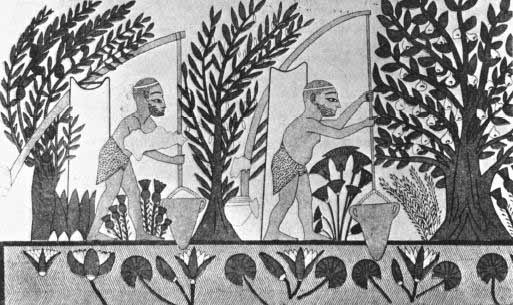
The irrigation system is attested already in very ancient times, the earliest around 6000 BCE. Through a system of dikes, dams and canals the precipitation in the mountainous region in the north is used in the south. This required a high level of organization of the society and collective efforts for the construction, maintenance, supervision and adjustments of the irrigation network. Over-irrigation and limited drainage gradually irrigating the fields, often causing ecological crisis. Together with the change of river flow, it stimulates throughout the Mesopotamian history the foundation of new settlements and cities. Our knowledge about the history of irrigation networks is limited by the difficulty of dating most of the water works.
Researchers have identified an extensive Mesopotamian canal network that supplied ancient farms in the Eridu region with water from the Euphrates river before the first millennium B.C. Live Science - March 7, 2025
The ancient Mesopotamians created a massive, sophisticated network of canals to water their crops more than 3,000 years ago, a new study has revealed. Researchers found thousands of ancient irrigation canals up to 5.6 miles (9 kilometers) long carved into the landscape near Basra in Iraq, which at the time was the Eridu region of Mesopotamia. Mesopotamians occupied this region along the vast Euphrates river from the sixth millennium B.C. (8,000 to 7,000 years ago) to the early first millennium B.C. (3,000 to 2,000 years ago). The canals provide researchers with rare insights into the ancient practices of Mesopotamians, according to a statement released by Durham University in the U.K., one of the universities involved in the research.
Mesopotamian diseases are often blamed on pre-existing spirits: gods, ghosts, etc. However, each spirit was held responsible for only one of what we would call a disease in any one part of the body. So usually "Hand of God X" of the stomach corresponds to what we call a disease of the stomach. A number of diseases simply were identified by names, "bennu" for example.
Also, it was recognized that various organs could simply malfunction, causing illness. Gods could also be blamed at a higher level for causing named diseases or malfunctioning of organs, although in some cases this was a way of saying that symptom X was not independent as usual, but was caused in this case by disease Y.
It can also be shown that the plants used in treatment were generally used to treat the symptoms of the disease, and were not the sorts of things generally given for magical purposes to such a spirit. Presumably specific offerings were made to a particular god or ghost when it was considered to be a causative factor, but these offerings are not indicated in the medical texts, and must have been found in other texts.
By examining the surviving medical tablets it is clear that there were two distinct types of professional medical practitioners in ancient Mesopotamia. The first type of practitioner was the ashipu, in older accounts of Mesopotamian medicine often called a "sorcerer." One of the most important roles of the ashipu was to diagnose the ailment. In the case of internal diseases, this most often meant that the ashipu determined which god or demon was causing the illness.
The ashipu also attempted to determine if the disease was the result of some error or sin on the part of the patient. The phrase, "the Hand of..." was used to indicate the divine entity responsible for the ailment in question, who could then be propitiated by the patient.
The ashipu could also attempt to cure the patient by means of charms and spells that were designed to entice away or drive out the spirit causing the disease. The ashipu could also refer the patient to a different type of healer called an asu. He was a specialist in herbal remedies, and in older treatments of Mesopotamian medicine was frequently called "physician" because he dealt in what were often classifiable as empirical applications of medication. For example, when treating wounds the asu generally relied on three fundamental techniques: washing, bandaging, and making plasters. All three of these techniques of the asu appear in the world's oldest known medical document (c. 2100 BCE).
The knowledge of the asu in making plasters is of particular interest. Many of the ancient plasters (a mixture of medicinal ingredients applied to a wound often held on by a bandage) seem to have had some helpful benefits.
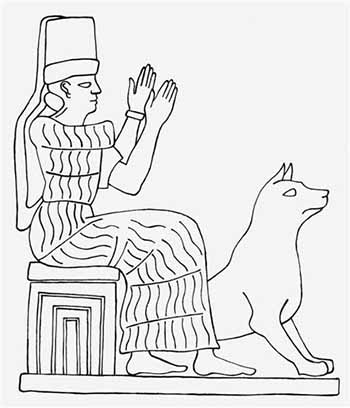
Beyond the role of the ashipu and the asu, there were other means of procuring health care in ancient Mesopotamia. One of these alternative sources was the Temple of Gula. Gula, often envisioned in canine form, was one of the more significant gods of healing.
While excavations of temples dedicated to Gula have not revealed signs that patients were housed at the temple while they were treated (as was the case with the later temples of Asclepius in Greece), these temples may have been sites for the diagnosis of illness. In his book Illness and Health Care in the Ancient Near East: the Role of the Temple in Greece, Mesopotamia, and Israel, Hector Avalos states that not only were the temples of Gula sites for the diagnosis of illness (Gula was consulted as to which god was responsible for a given illness), but that these temples were also libraries that held many useful medical texts.
The primary center for health care was the home, as it was when the ashipu or asu were employed. The majority of health care was provided at the patient's own house, with the family acting as care givers in whatever capacity their lay knowledge afforded them. Outside of the home, other important sites for religious healing were nearby rivers.
Mesopotamians believed that the rivers had the power to care away evil substances and forces that were causing the illness. Sometimes a small hut was set up for the afflicted person either near the home or the river to aid in the families centralization of home health care.
In ancient Mesopotamia, sex among the gods shook heaven and earth PhysOrg - April 23, 2018
Sexuality was central to life in ancient Mesopotamia, an area of the Ancient Near East often described as the cradle of western civilization roughly corresponding to modern-day Iraq, Kuwait, and parts of Syria, Iran and Turkey. It was not only so for everyday humans but for kings and even deities. Mesopotamian deities shared many human experiences, with gods marrying, procreating and sharing households and familial duties. However when love went wrong, the consequences could be dire in both heaven and on earth. Scholars have observed the similarities between the divine "marriage machine" found in ancient literary works and the historical courtship of mortals, although it is difficult to disentangle the two, most famously in so-called "sacred marriages", which saw Mesopotamian kings marrying deities. Divine sex : Gods, being immortal and generally of superior status to humans, did not strictly need sexual intercourse for population maintenance, yet the practicalities of the matter seem to have done little to curb their enthusiasm.
New Dam in Turkey Threatens to Flood Ancient City and Archaeological Sites National Geographic - February 21, 2014
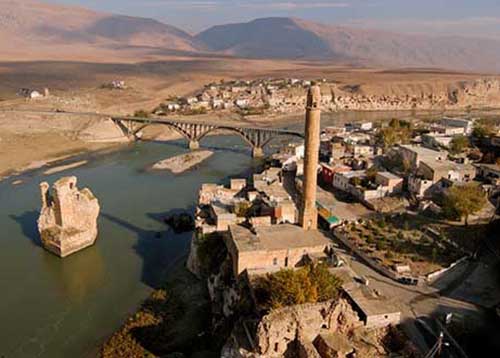
From the Neolithic caves riddling its cliffs to the honey-colored, 15th-century minarets looming over its streets, Hasankeyf, Turkey, is a living museum of epic proportion. Rare birds soar around the crumbling towers of its Artuqid bridge. Shepherds' songs have echoed through its canyons for centuries, even as the area transformed from a Byzantine bishopric to an Arab fortress to an outpost in the Ottoman Empire. Almost every major Mesopotamian civilization has occupied this 12,000-year-old settlement site on the banks of the Tigris River in southeastern Turkey, not far from the border with Syria. But today's reigning power, the Turkish Republic, has a unique plan for Hasankeyf: submerging the ancient town beneath 200 feet (60 meters) of water.
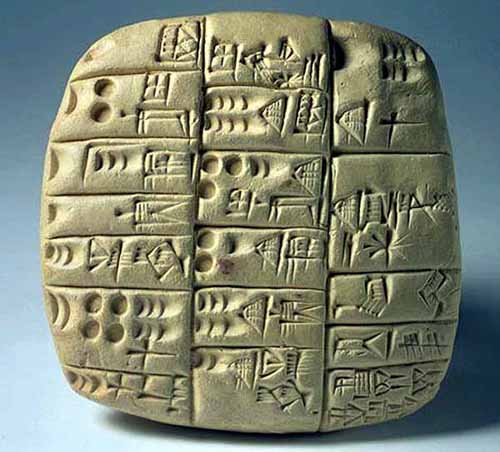
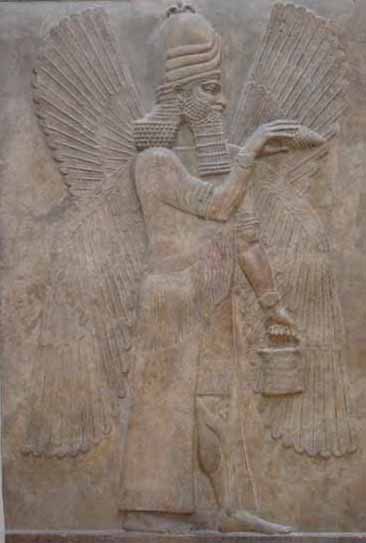
Gods and Goddesses
